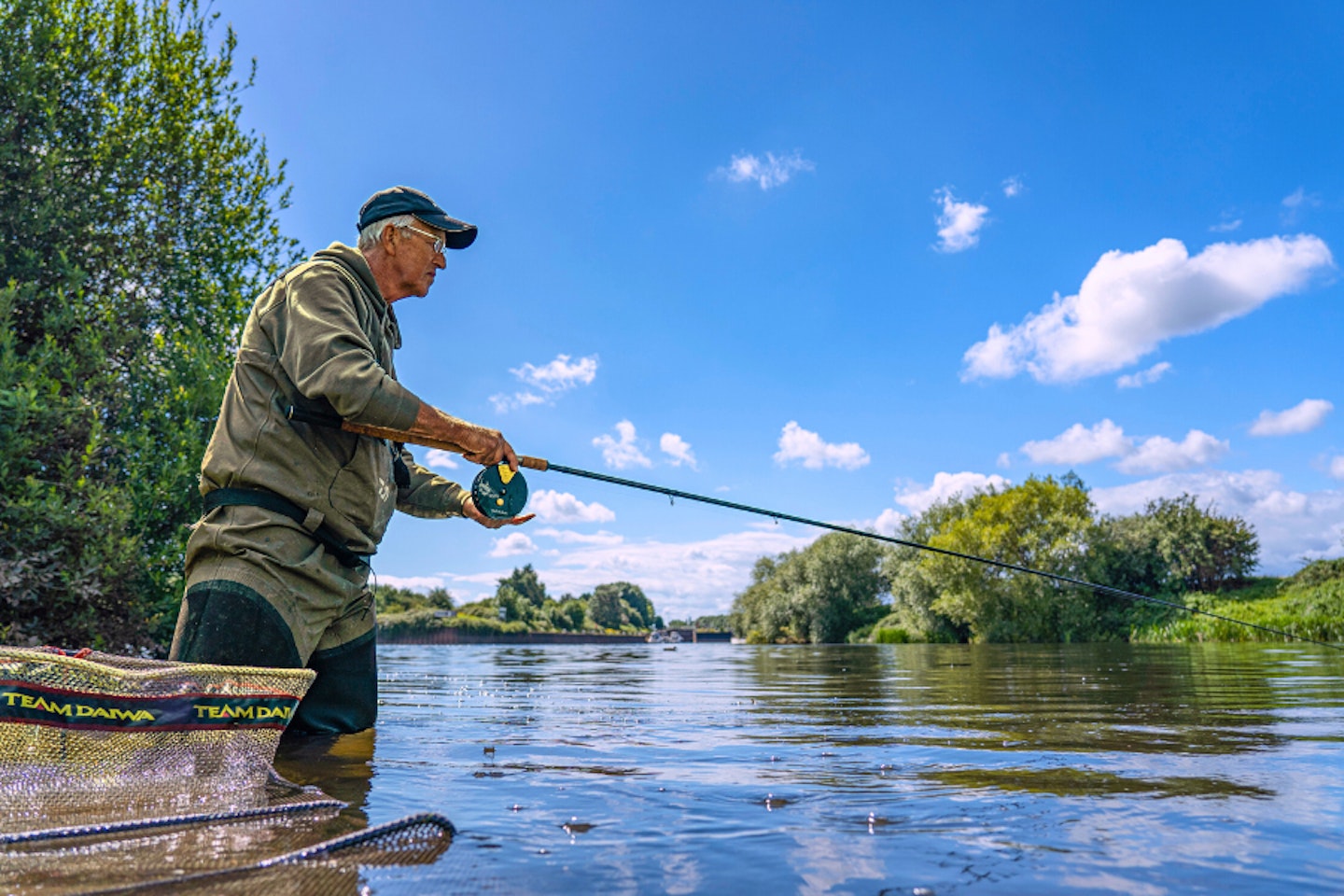One of the purest forms of angling is running a float with the flow on a river. When the levels lift and the colour creeps in after rain, there’s no better time to grab some running water sport.
This article pulls together 20 practical river float fishing tips from accomplished anglers that work, and you can implement them today. Where to feed, how to read the flow, when to slow the rig and mend the line.
The aim is simple: help you catch more fish in running water with confident decisions, and lots of tips that improve your fishing. Read on to learn which swims to target, the tackle that makes life easier, and the small tweaks that can turn a trot into a take.
Chub fishing
Chub love the main flow of water. They sit just off it in the slack water, using the flow to bring food to them. Find that crease and run a waggler down the fast lane so your hookbait drifts naturally across the slack water. It puts the bait right where chub expect an easy meal.
Where the river shallows up, chub will often patrol the change of depth. Run your bait just into the edge of the deep water before it shallows. Loosefeed hemp and caster to draw fish onto the line, watch for surface swirls. If you see them, the chub have come shallow.
THESE CHUB FISHING TIPS WILL HELP YOU CATCH MORE OF THESE INCREDIBLE FISH...
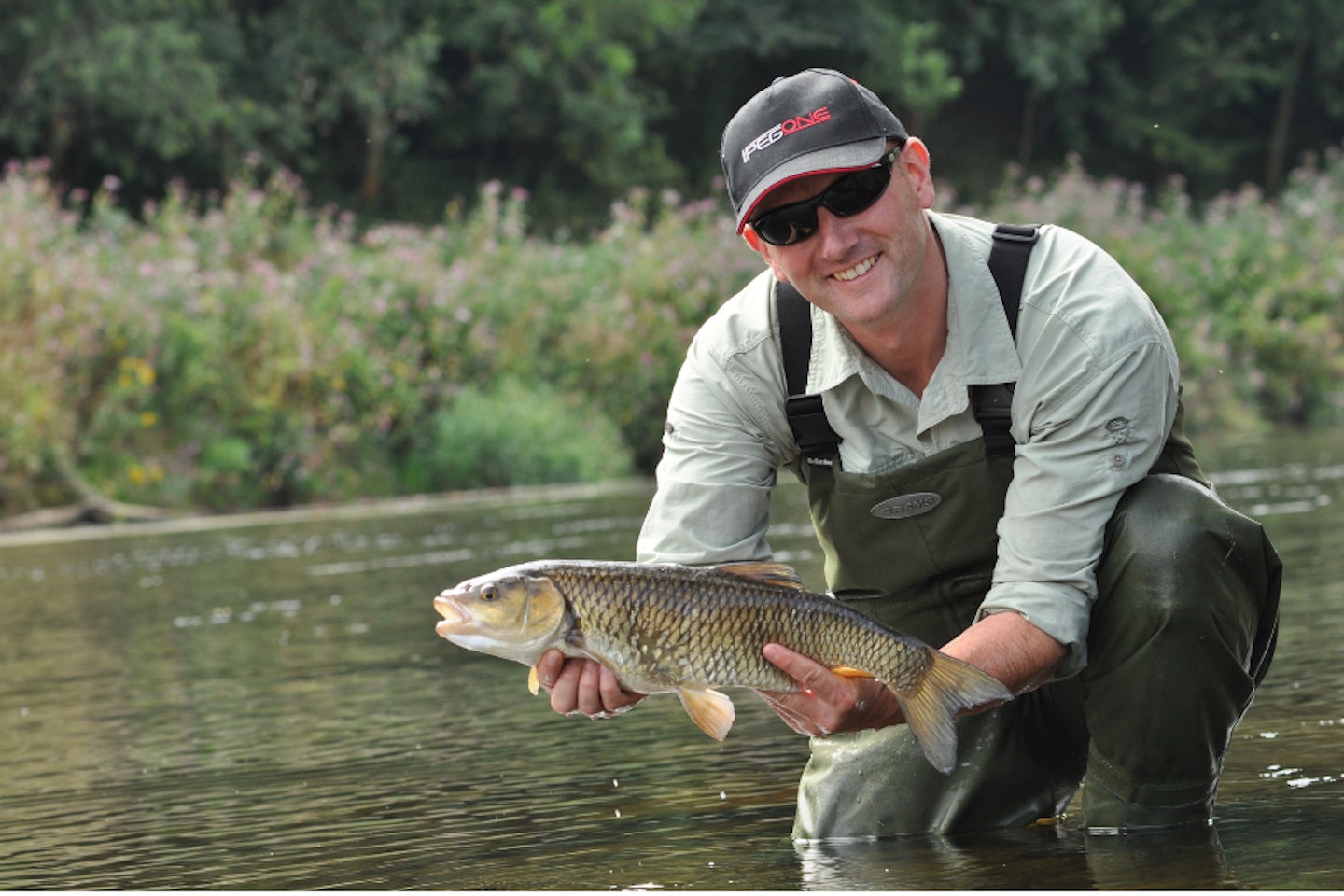
Choose the right float
Choosing between a waggler and a stick float usually comes down to wind. If you’ve got a gentle upstream breeze off your back, the stick float is the perfect choice, in most other conditions the waggler gives you better control of the line through the peg.
On pacey rivers a flat float can be devastating for big bream, tench, perch and the odd eel. It is a patient method. You are fishing well overdepth, so expect dips and lifts before the float finally slides away. Use a bump bar to fix the pole in position and sit on your hands. Striking too soon costs you the better fish this rig is built for.
River fish are nomadic. Even if your plan is to pin them on a tight pole line, set up something that can search the river. A stick float rig that trundles bait through the peg, or a simple waggler, will pick off fish as they drift up to the feed. Use it early to nick a few while the swim builds. Once the shoal arrives, swap to the static pole approach and make it count.
THE BEST FLOAT FISHING RODS WILL HELP YOU CONTROL YOUR FLOAT MUCH MORE EASILY!
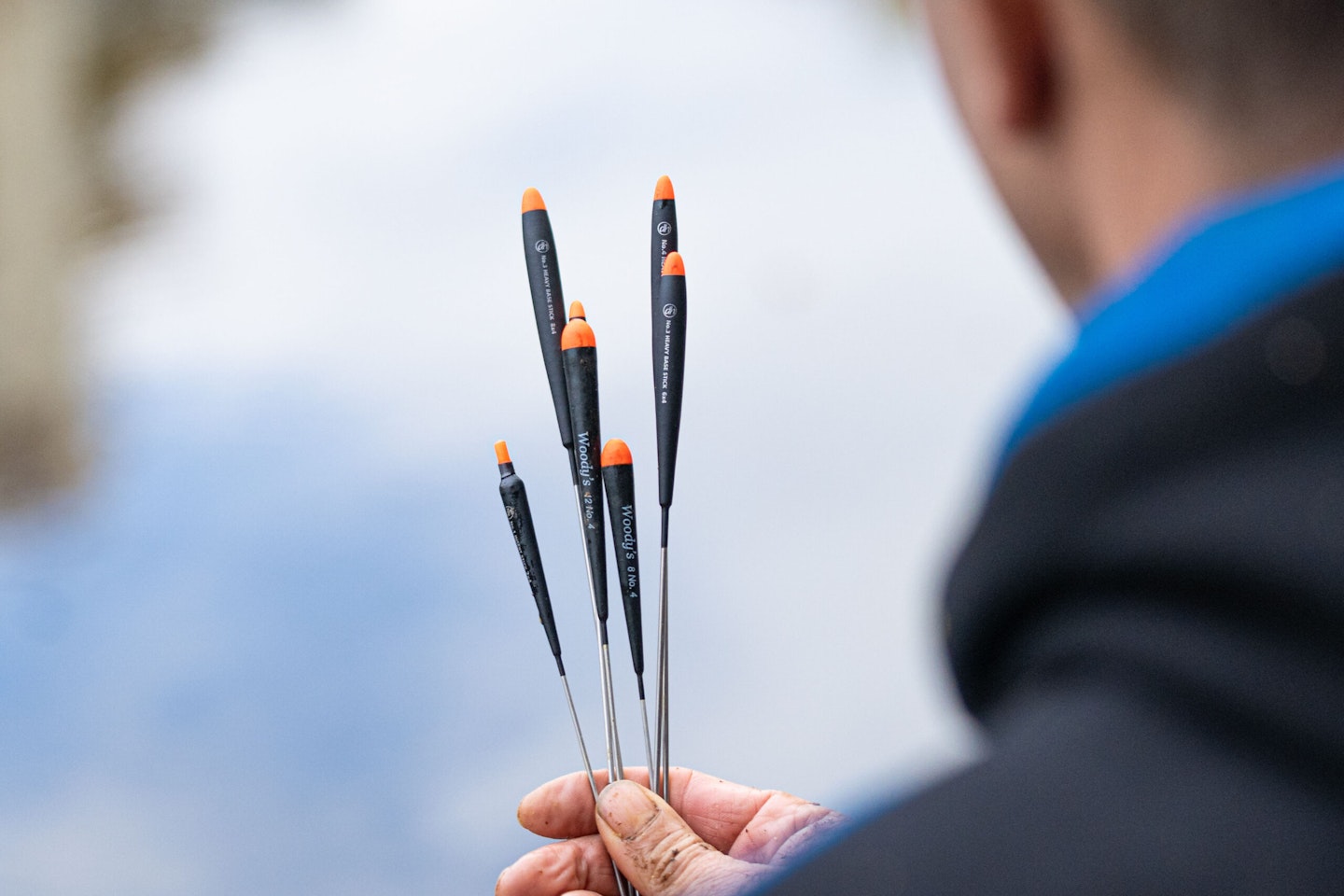
Where to feed
Feed slightly downstream. Chub will push up above where the loose feed is landing, so feeding directly In front of you could result in the chub being upstream of where you’re fishing and you will no longer be able to effectively present a bait. Start with half a pouch, watch how the swim settles, and build it gradually from there. Piling bait in early can blow the peg before it gets going.
DON'T GO FISHING ON THE RIVER WITHOUT A SELECTION OF THESE BAITS!
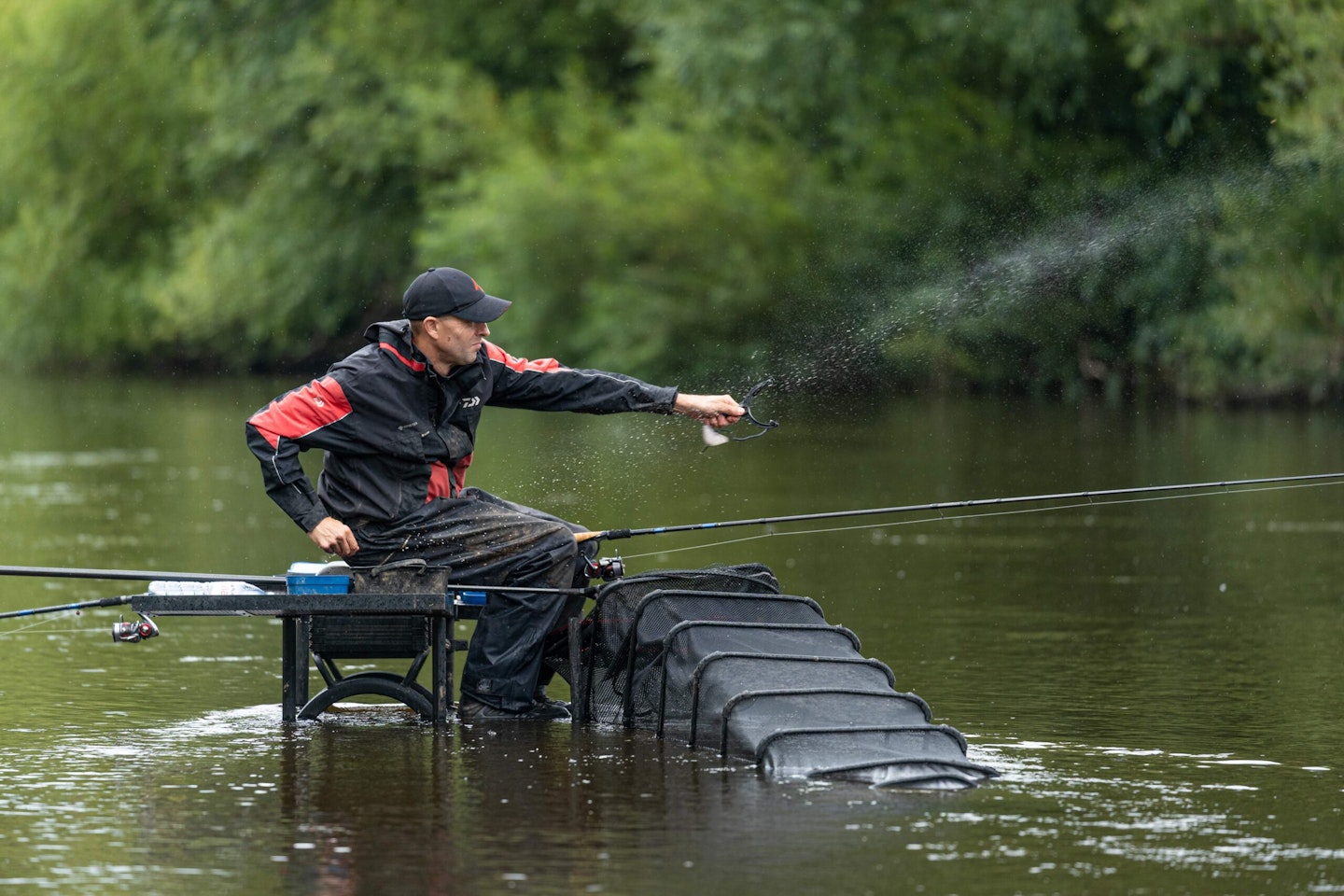
Don't forget your baitdropper
When rain puts colour in the river, precision beats guesswork. A baitdropper lets you feed tight and fish tight on the pole for bream. Drop in chopped worm, caster and pinkies to build a neat dinner plate on the deck. Then lower the rig right on top of it. It is cleaner and more efficient than balling in groundbait, which spreads feed and the fish around the swim.
If the peg fades, arrival of a big fish could be responsible. Top up the feed to squeeze a few more bites, then switch to a lobworm on the hook. You might wait a while, but when it goes, it can be the fish you did not expect to live in that stretch.
IF YOU ARE NEW TO RIVER FISHING, CHECK OUT THESE EXCELLENT TIPS TO GET STARTED.

Choose the right baits
Plenty swear by light-coloured baits in coloured water. White maggots, light casters, that sort of thing. But dark baits can be better. Fish have no trouble finding dark coloured groundbait, hemp, casters, worms, red maggots, and fluoro pinkies.
In clear water, bread is a quick bite-getter. A stick float is an effective way to present it because you can slow the rig to tease the flake enticingly through the fish. Do this by checking the line lightly as it comes off the spool with your fingertip. The float will pull off-line, which is fine. It’s better than having loose line in front of the float that will be difficult to pick up and set the hook if you get a bite.
THE BEST SPECIMEN FISHING RODS ARE PERFECT FOR CHUB AND BARBEL ON THE RIVER.
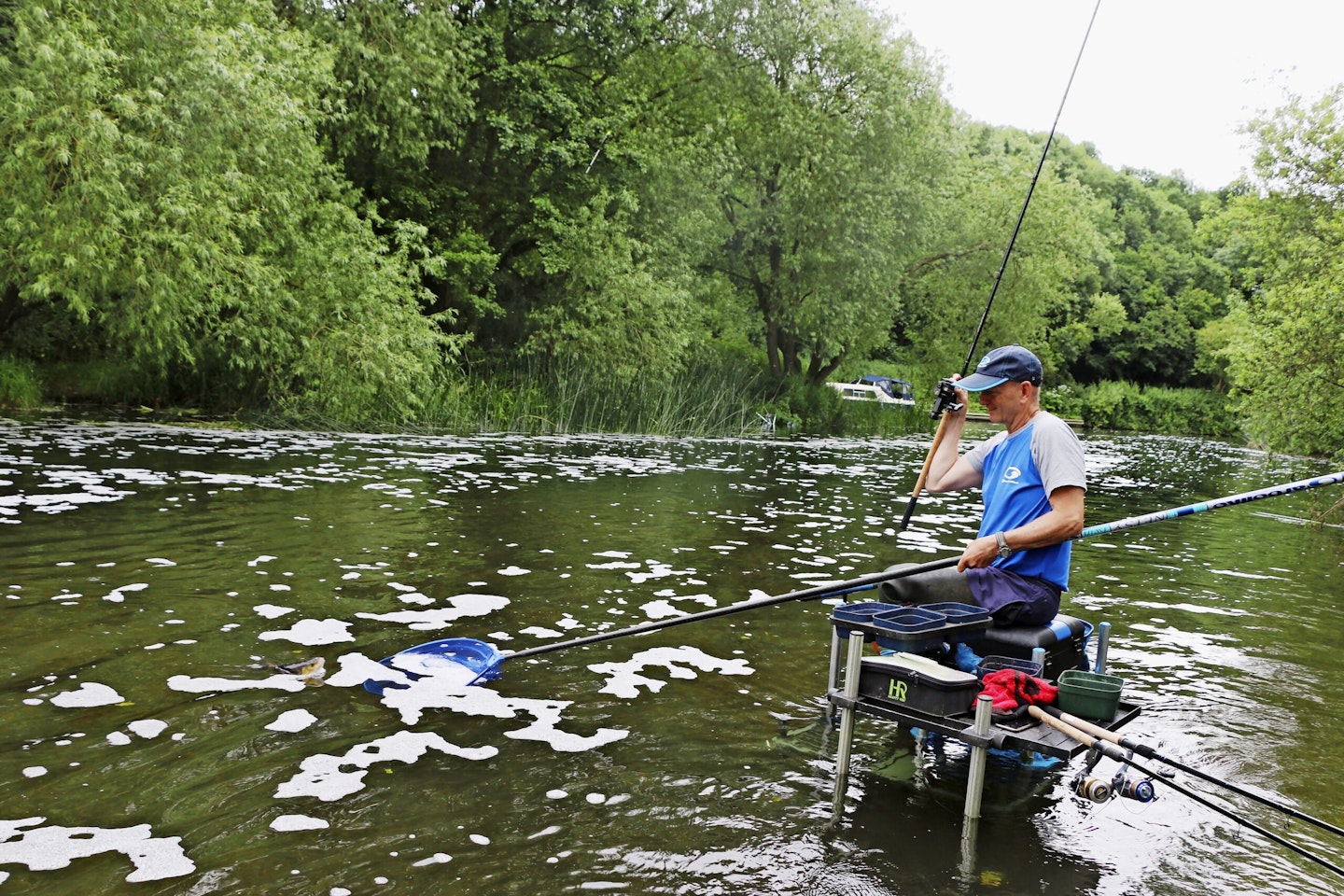
Catch barbel
Barbel on the float is rare, but not impossible. Use a long float fishing rod with a 6g Bolognese float and fish this three feet over-depth to slow everything down. An 8mm banded halibut pellet. Feed a good pouch of hemp and a pouch of 6mm pellets every run through.
Do not assume barbel hug the bottom all day. They will drift up a few feet to pick off loose feed. Trotting small particles, a foot off the deck can transform a quiet peg. Maggots and casters are perfect for this job.
If there is a chance of a barbel or a big chub, your gear needs to be able to cope. In coloured conditions, do not be shy about it. A minimum of 6lb line is essential and you will stand a chance of landing anything you are likely to encounter.
On deep rivers like the Trent, smooth water at roughly walking pace and around six feet deep, this is prime barbel ground. Steer clear of turbulent pegs full of boulders and snags. Fish live there but landing them is another matter.
TRY THIS TROTTING RIG IF YOU WANT TO CATCH A BARBEL ON THE FLOAT.
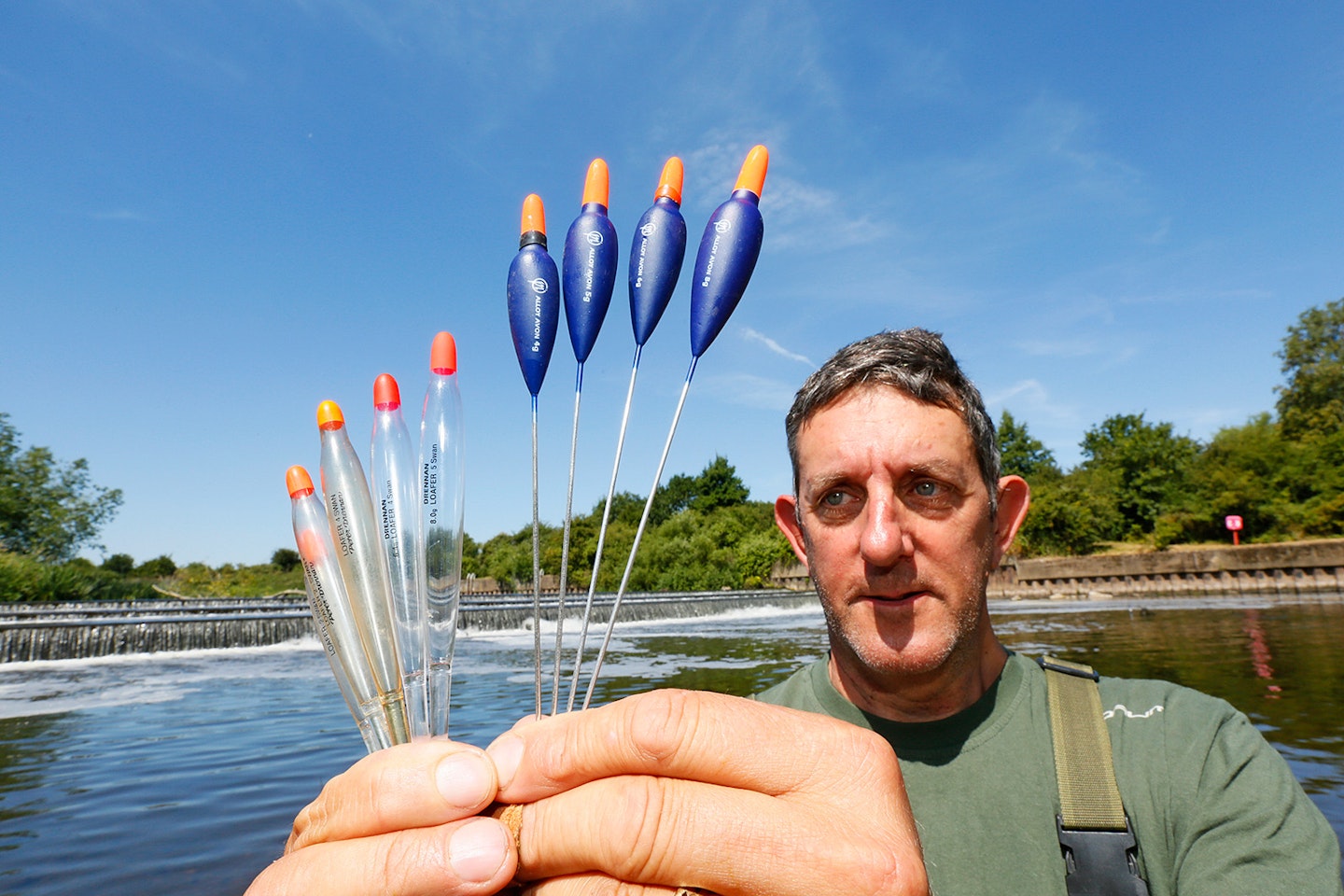
Get after the perch
For big summer perch, a livebait near cover like sunken trees and reedbeds beats most things. Skip float fishing and go static with a float-paternoster set up. Hair-rig the bait below a wide-gape size 4 or 6. It fishes clear of snags and reduces the number of deep-hooked fish.
Perch treat snags like home. Find slack water under an overhanging tree and flick in a lobworm on a simple bomb rig. Feed chopped worm and caster to keep them rooting. If you struggle with a baitdropper, use a little groundbait as a carrier to get the bait down.
THE BEST FEEDER RODS ARE EXCELLENT TOOLS FOR CATCHING BIG PERCH ON RIVERS.
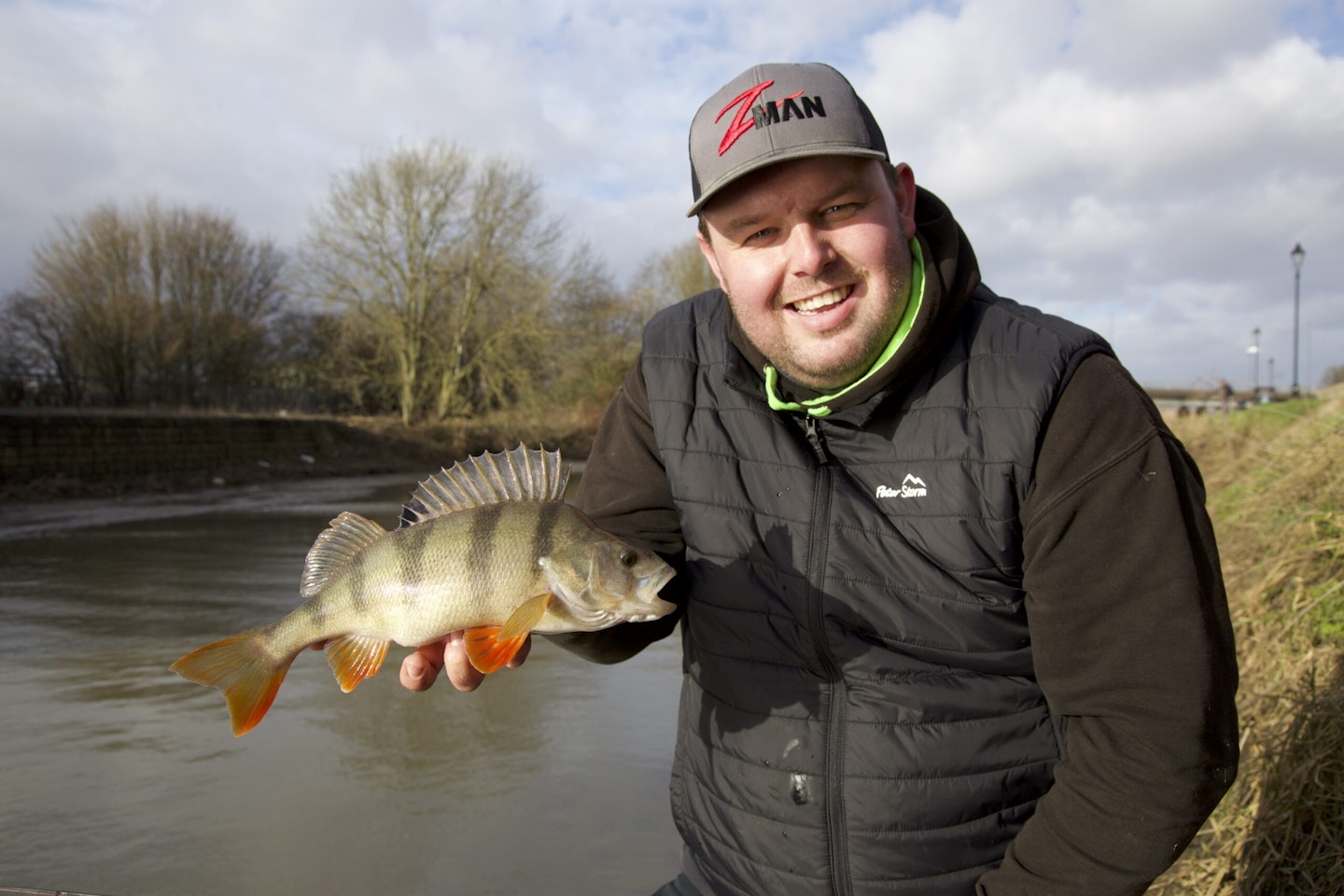
Gear up for big fish
Leave the light gear at home for big-fish river work. A power waggler rod, the kind built for commercial carp or a specimen rod, gives you the backbone you need. Fish 6lb straight through.
On big, wild rivers like the Wye there is little point in fishing with tiny baits. Three or four maggots or casters, or a couple of grains of sweetcorn, will still catch dace and roach while still appealing to the better fish.
Work the float
Successful stick float fishing is active. Working the float will pay dividends, slow the float to half pace and even hold it still for a second. Trap the line on the spool with a fingertip or dab the rim of the spool as the line peels off. Those pauses present a dead-still bait the fish find hard to refuse.
When you’re long trotting, leave a touch more float tip showing. You’ll read bites cleanly, and the extra show will stop the float getting dragged under by stray weed or debris. In shallow, clear water that also means fewer false bites, which keeps the fish calmer and the peg productive for longer.
MASTER THE RIVER TRENT WITH THIS EXPERT GUIDE.
